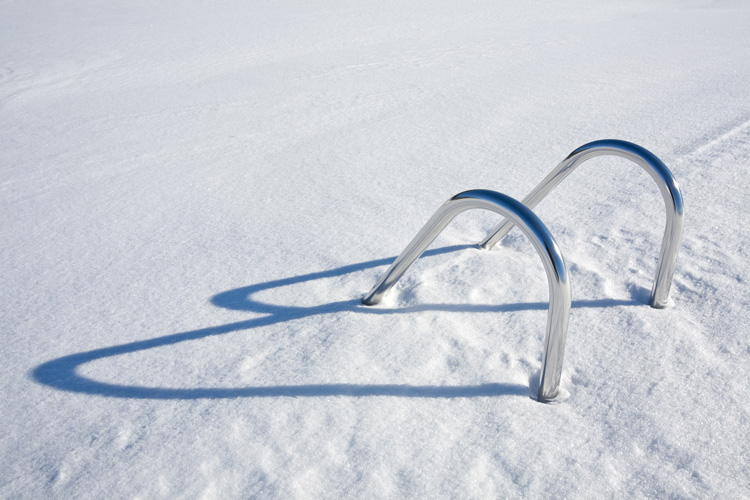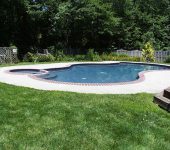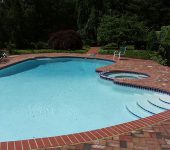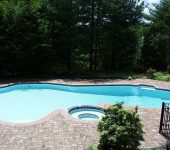
How to Winterize Your Pool
The Greater Philadelphia area experiences its fair share of winter weather, from freezing cold temperatures to snowfall and icy conditions. To best prepare your outdoor oasis for the colder months, it’s crucial to winterize your pool. Below we share some general guidelines to follow before you begin the winterizing process:
When to Start Prepping Your Swimming Pool for Winter
Getting your pool ready for winter begins way before the temperatures drop. Once the summer days fade away, you’ll want to start the winterizing process. Begin when the temperature consistently dips below 65 degrees. Beginning too early can maximize problems with algae because it thrives in warmer temperatures. The process typically takes about a week to complete, as several steps are performed over a couple of days. Follow the steps below to properly winterize your pool.
Put Equipment Away
You can begin removing ladders, steps, diving boards, and other accessories to keep them from freezing during the winter. Hose off any debris or algae and let them dry before storing. If you have a shed or a portion of your garage where you store away pool toys and other equipment, now is an optimal time to get that space organized.
Deep Clean the Pool
Vacuum the entire pool, brush down the walls, and skim the surface. Your pool should be spotless when you cover it. The cleaner it is when you close it, the fewer nasty surprises you’ll find when you open it in the spring.
Don’t Drain your Pool Entirely
It might not make sense now, but completely draining your pool for the wintertime can cause severe issues in and around your pool. Read your pool manufacturer’s instructions about pool draining. Your local pool professionals can give you additional information as well. Generally, the water level should be about a foot lower than the skimmer if you have a mesh cover and about half a foot below the skimmer for solid covers. Plan for this process to take at least a day or two.
Add Winterizing Chemicals
Before closing your pool, add shock, which kills bacteria, and algaecide, which kills algae. Follow the package directions and distribute them evenly around the pool. If using chlorine shock, avoid using it at the same time as the algaecide. It’s also best to balance the water chemistry based on the following ranges:
- pH: between 7.4–7.6 ppm
- Total Alkalinity: between 80–120 ppm
- Calcium Hardness: between 200–400 ppm
- Chlorine: between 2–4 ppm
Call the Professionals at Arrow Pool Service
If you haven’t yet requested professional pool closing services from Arrow Pool Service, you should set up an appointment. Our team of pool closing professionals will help you through the winterizing process and provide a professional cover, winterizing chemicals, and the highest quality equipment maintenance to keep your pool clear and clean.
Getting Your Pool Ready for Winter With Arrow Pool Service
If you’re still Googling “How to winterize your pool,” stop and contact the experts at Arrow Pool Service today! We can ensure your pool is winterized correctly so you can rest assured knowing your investment is protected, and that costly damage won’t occur. Don’t take any chances – call Arrow Pool Service at 610-557-3936 to request pool closing assistance.


 Hours
Hours





